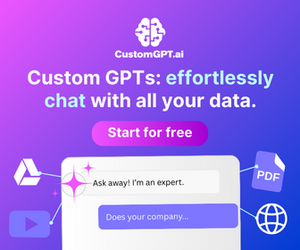-
Table of Contents
Key Drivers of Artificial Intelligence

Key drivers of artificial intelligence (AI) are transforming industries, reshaping economies, and redefining how we interact with technology. Understanding these forces is crucial for anyone looking to harness AI’s potential. Whether you’re a business leader, developer, or enthusiast, recognizing these catalysts will help you stay ahead in an increasingly AI-driven world.
Table of Contents
- The Data Explosion
- Advancements in Hardware
- Algorithmic Breakthroughs
- Cloud Computing and Scalability
- Investment and Market Demand
- Regulatory and Ethical Considerations
- Key Takeaways
The Data Explosion: Fueling AI Growth
One of the primary forces behind AI’s rapid evolution is the exponential growth of data. Every day, we generate 2.5 quintillion bytes of data, from social media posts to IoT devices. This vast amount of information provides the raw material AI systems need to learn and improve. For example, companies like Netflix use user data to refine recommendation algorithms, boosting engagement by 35%.
Moreover, advancements in data storage and processing have made it easier to handle this deluge. Technologies like distributed computing and edge AI allow real-time analysis, enabling smarter decision-making. Without this data surge, AI models would lack the diversity and volume required for accurate predictions.
How Big Data Powers Machine Learning
Machine learning thrives on large datasets. The more data an algorithm processes, the better it performs. Consider Google’s BERT model, which trained on 3.3 billion words to revolutionize natural language processing. Key benefits include:
- Improved accuracy in predictions and classifications
- Enhanced ability to identify patterns and anomalies
- Greater adaptability to new scenarios
Advancements in Hardware: The Backbone of AI
Another critical factor propelling AI forward is the development of specialized hardware. Traditional CPUs struggle with AI workloads, but GPUs and TPUs excel at parallel processing. For instance, NVIDIA’s A100 GPU accelerates AI training by up to 20x compared to older models.
Furthermore, neuromorphic chips mimic the human brain’s architecture, enabling more efficient AI operations. Companies like Intel and IBM are investing heavily in these technologies, paving the way for next-generation AI applications.
The Role of Quantum Computing
Quantum computing promises to revolutionize AI by solving complex problems in seconds. While still in its infancy, breakthroughs from companies like Google and IBM suggest a future where AI models train in a fraction of the time. This could unlock new possibilities in drug discovery, climate modeling, and more.
Algorithmic Breakthroughs: Smarter AI Models
Key drivers of artificial intelligence also include innovations in algorithms. Techniques like deep learning and reinforcement learning have enabled AI to outperform humans in tasks like image recognition and game strategy. OpenAI’s GPT-4, for example, demonstrates how advanced algorithms can generate human-like text.
Additionally, transfer learning allows models to apply knowledge from one domain to another, reducing training time and resources. This approach has been instrumental in fields like healthcare, where AI assists in diagnosing diseases with limited data.
Case Study: AlphaFold’s Protein Folding
DeepMind’s AlphaFold solved a 50-year-old biology challenge by predicting protein structures with remarkable accuracy. This breakthrough showcases how cutting-edge algorithms can tackle previously insurmountable problems, offering immense potential for scientific research.
Cloud Computing and Scalability: Democratizing AI
Cloud platforms like AWS, Google Cloud, and Azure have made AI accessible to businesses of all sizes. By offering scalable infrastructure, these services eliminate the need for costly upfront investments. Startups can now deploy AI solutions without building their own data centers.
Moreover, cloud-based AI tools enable collaboration across global teams. For example, Tesla uses cloud computing to analyze data from its fleet of vehicles, continuously improving its autonomous driving algorithms.
The Rise of AI-as-a-Service
AI-as-a-Service (AIaaS) allows companies to integrate pre-built AI models into their workflows. Services like IBM Watson and Microsoft Cognitive APIs provide ready-made solutions for speech recognition, sentiment analysis, and more. This trend lowers barriers to entry, fostering innovation across industries.
Investment and Market Demand: Fueling AI Adoption
Key drivers of artificial intelligence are also financial. Global AI investment reached $94 billion in 2022, reflecting strong confidence in the technology’s potential. Companies like Tesla and Amazon allocate billions to AI research, driving rapid advancements.
Consumer demand for personalized experiences further accelerates adoption. From chatbots to smart home devices, users expect AI-powered solutions that simplify their lives. Businesses that fail to integrate AI risk falling behind competitors.
Statistics on AI Market Growth
The AI market is projected to grow at a CAGR of 38% from 2023 to 2030. Key sectors driving this growth include:
- Healthcare: AI diagnostics and drug discovery



Leave a Reply